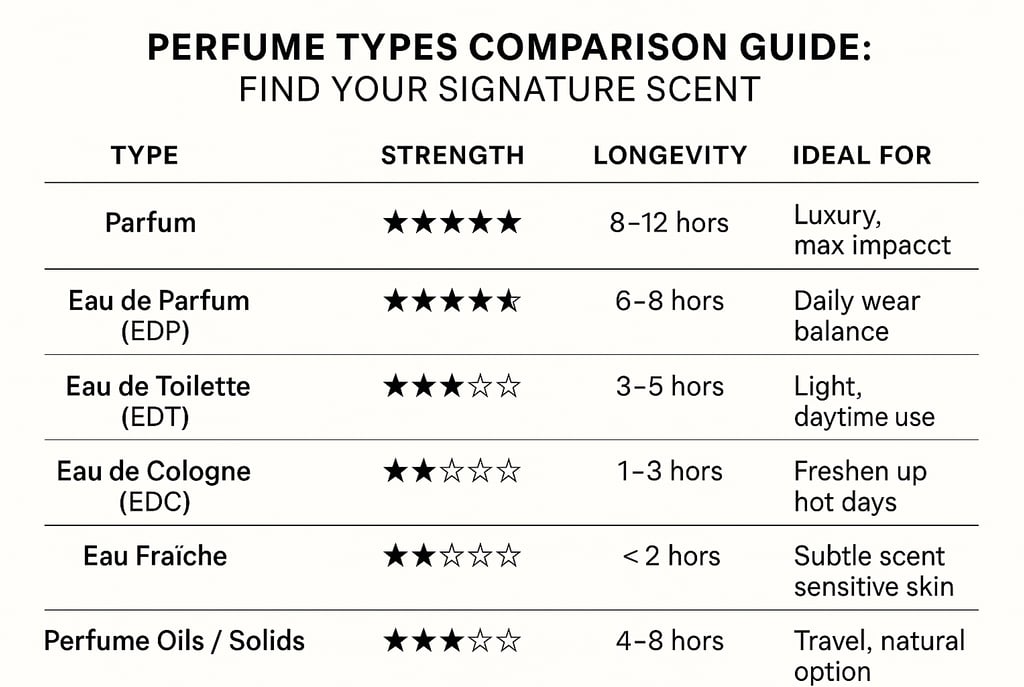What are the Different Types of Perfume?
Comparison guide of the differences between perfumes.
4/30/20251 min read


Perfume Types Comparison Guide: Find Your Signature Scent
Not all perfumes are created equal. From strength to longevity, here’s a quick guide to the most common fragrance types to help you choose the right one:
1. Parfum (Extrait de Parfum)
Concentration: 20–30%
Lasts: 8–12 hours
Best for: Special occasions, long wear
Pros: Longest lasting, rich scent
Cons: Expensive, strong for some
2. Eau de Parfum (EDP)
Concentration: 15–20%
Lasts: 6–8 hours
Best for: Daily wear, evening events
Pros: Great balance of strength & price
Cons: Slightly intense for hot days
3. Eau de Toilette (EDT)
Concentration: 5–15%
Lasts: 3–5 hours
Best for: Casual or daytime use
Pros: Light, affordable
Cons: Requires reapplication
4. Eau de Cologne (EDC)
Concentration: 2–5%
Lasts: 1–3 hours
Best for: Quick refreshes, warm weather
Pros: Fresh, budget-friendly
Cons: Low staying power
5. Eau Fraîche
Concentration: 1–3%
Lasts: <2 hours
Best for: Sensitive skin, very light scent
Pros: Gentle, water-based
Cons: Very short-lived
6. Perfume Oils / Solids
Concentration: Varies (often high)
Lasts: 4–8 hours
Best for: Travel, discreet wear
Pros: No alcohol, skin-friendly
Cons: Less projection, niche availability
Tip: Go for parfum or EDP if you want staying power. Choose EDT or EDC for a lighter touch and solid or oil if you’re on the go.
